Tuesday, February 20, 2007
An intriguing figure in the fifteenth century
By Benjamin H. Leblanc valmont@lanzen.net M.Sc. Student, Sociology of ReligionUniversity of Montreal, Canada
In less than two years from now the Count will celebrate his 100th birthday, and many Dracula enthusiasts from all around the world intend to underline this event. Of course, almost everybody has heard about this nosferatu: through movies featuring Max Schreck, Bela Lugosi, Christopher Lee or Gary Oldman; in several books - among which the recent Vampire Chronicles of Anne Rice; or even in bedtime stories told to us in our childhood. We all have an idea of who or what the Count is. However, on the other hand, Vlad Tepes Dracula, the historical figure who inspired Bram Stoker for his novel, is definitely less known. The centennial of the gothic masterpiece provides us with a good pretext to dive back into the life of this machiavellian fifteenth century leader - an initiative that will enable us to better appreciate the work of Stoker.
Vlad Tepes was born in November or December 1431, in the fortress of Sighisoara, Romania. His father, Vlad Dracul, at that time appointed military governor of Transylvania by the emperor Sigismund, had been inducted into the Order of the Dragon about one year before. The order - which could be compared to the Knights of the Hospital of St. John or even to the Teutonic Order of Knights - was a semimilitary and religious society, originally created in 1387 by the Holy Roman Emperor and his second wife, Barbara Cilli. The main goals of such a secret fraternal order of knights was mainly to protect the interests of Catholicism, and to crusade against the Turks. There are different reasons why this society is so important to us. First, it provides an explanation for the name "Dracula;" "Dracul," in Romanian language, means "Dragon", and the boyars of Romania, who knew of Vlad Tepes' father induction into the Order of the Dragon, decided to call him "Dracul." "Dracula," a diminutive which means "the son of Dracul," was a surname to be used ultimately by Vlad Tepes. A second major role of this Order as a source of inspiration for Stoker's evil character is the Order's official dress - a black cape over a red garment - to be worn only on Fridays or during the commemoration of Christ's Passion.
In the winter of 1436-1437, Dracul became prince of Wallachia (one of the three Romanian provinces) and took up residence at the palace of Tirgoviste, the princely capital. Vlad Tepes followed his father and lived six years at the princely court. In 1442, for political reasons, Dracula and his younger brother Radu were taken hostage by the Sultan Murad II; Dracula was held in Turkey until 1448, while his brother Radu decided to stay there until 1462. This Turkish captivity surely played an important role in Dracula's upbringing; it must be at this period that he adopted a very pessimistic view of life. Indeed, the Turks set him free after informing him of his father's assassination in 1447 - organized by Vladislav II. He also learned about his older brother's death - Mircea was the eldest legitimate son of Dracul - and how he had been tortured and buried alive by the boyars of Tirgoviste.
At 17 years old, Vlad Tepes Dracula, supported by a force of Turkish cavalry and a contingent of troops lent to him by pasha Mustafa Hassan, made his first major move toward seizing the Wallachian throne. But another claimant, no other than Vladislav II himself, defeated him only two months later. In order to secure his second and major reign over Wallachia, Dracula had to wait until July of 1456, when he had the satisfaction of killing his mortal enemy and his father's assassin. Vlad then began his longest reign - 6 years - during which he committed many cruelties, and hence established his controversed reputation.
His first major act of revenge was aimed at the boyars of Tirgoviste for the killing of his father and his brother Mircea. On Easter Sunday of what we believe to be 1459, he arrested all the boyar families who had participated to the princely feast. He impaled the older ones on stakes while forcing the others to march from the capital to the town of Poenari. This fifty-mile trek was quite grueling, and those who survived were not permitted to rest until they reached destination. Dracula then ordered them to build him a fortress on the ruins of an older outpost overlooking the Arges river. Many died in the process, and Dracula therefore succeeded in creating a new nobility and obtaining a fortress for future emergencies. What is left today of the building is identified as Castle Dracula.
Tuesday, February 13, 2007
Ni Wamene UyoAlbum:
Submitted by: Chilufya Siameja
VERSE 1
Zintu zimene tima chita sa muna ni zeePakuti ti winne chabe nkeche ni zeeLomba gelo tika winna ulemu usilaNinshi ankala kapolo wako wa pa nyumbaSomeone tell me why? Why?Why tima chinja tikamu peza wotikonda?Won't you tell me why, why?Why you treat your woman so bad when you know she loves you?Eh, eh...akainako ninshi ayipaAkayonda ninshi sumu dyesaAkakamba ninshi ni ntotaMwati kodi waibalaCHORUSNi wamene uyo... Ni wamene uyoMu na li ku nama boza mu mi sewoNi wamene uyo... Ni wamene uyoKoma lomba mwa chinjaNi wamene uyo... Ni wamene uyoMu na li ku nama boza pa ma gateKoma lomba ayipaVERSE 2Pa first kenze ni ka sweetheartEveryday imwe kenze ni ka darlingKoma lomba zina li na chinjaNi chi make junior kodi wa pika?Mwati mu kumbuka tate mweoPo yamba ndimwe mu na yenda umufunaLomba waibala apo peve chaipaOna gelo ungo mu lizaSomeone tell me why? Why?Why tima chinja tikamu peza wotikonda?Won't you tell me why, why?Why you treat your woman so bad when you know she loves you?Eh, eh...akainako ninshi ayipaAkayonda ninshi sumu dyesaAkakamba ninshi ni ntotaMwati kodi waibalaCHORUSBRIDGEBetter love your baby girlYou gonna miss her when she's goneYou should love your baby girlYou gonna miss her when she's goneBetter love your baby girlYou gonna miss her when she's goneBetter love your baby girlYou gonna miss her when she's goneCHORUS
Tuesday, February 06, 2007
Tuesday, January 02, 2007
"www.epilogue.com." www.epilogue.com. december. 2 Jan 2007
"www.Mythology.com."www.Mythology.com
"www.Marvel.com."www.Marvel.com
"holy hormones." www.holyhormones.com. 2 Jan 2007
"Norse God and Goddesses." www.Valkyrietower.com. 2 Jan
2007
"The Fantasy gallery." www.Fantasygallery.com. 2 Jan 2007
"About colombia mythology." www.colombianmythology.com.
2 Jan 2007
Lons, Veronica. "World Mythology." london, new york, toronto
1968 december 17, 2006
www.google.com. 2 Jan 2007
Monday, January 01, 2007
 ANALIYAH-Goddess of desire. Her appearance is strikingly beautiful. She is a spirit, a feeling, a mood. Born from the great goddess zyum, she lives in minds, clouds, nights, days. she keeps a lighting bolt at her left hand to conquer the desire of one. Her suducing looks transform into eveything. she can make anything possible only within ones dreams. She conquers the impossible and is known for her courage.
ANALIYAH-Goddess of desire. Her appearance is strikingly beautiful. She is a spirit, a feeling, a mood. Born from the great goddess zyum, she lives in minds, clouds, nights, days. she keeps a lighting bolt at her left hand to conquer the desire of one. Her suducing looks transform into eveything. she can make anything possible only within ones dreams. She conquers the impossible and is known for her courage.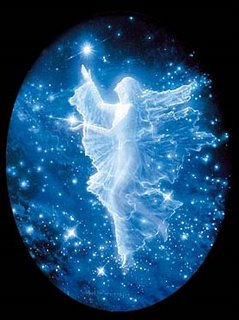
Star
Goddess of the stars. Created from multiple stars she is viewed as a bright, white light, in the shape of a young girl. Her eyes are commonly described as crystal by believers. She is of no race and lives in dreams. She can only be seen at night when the stars are out, and minds are free. She makes dreams come true. A scarfice must be given up in order for the dream to come true.
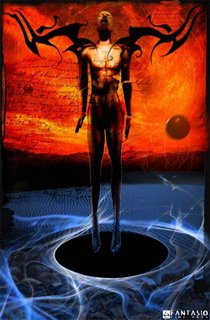 KARMA
KARMAGod Of revenge, negative and positive energy, forces, thoughts, and movements. Known to devour enemies within days, weeks, months, years, time is not limited nor restricted. His process is slow, and unexpectable. Its race is unknown and his presence is never felt. His punishments are considered to be cruel and drastick to one who has been corrupt without reasoning. He is undestructable, does not have a time of demise. Uses life itself to destroy, and never forgets.
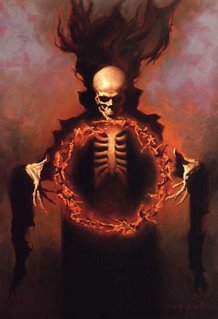
TRUTH
God of the darkness, collector of souls of women, controller and ruler of the dark worlds. His appearance is disturbing and can only be seen by those influnced by the dark, if not influnced by the dark then you cannot see him. Controls minds at the moment of intoxication of the dark. Can be found at anytime, any day. Aims to create his empire of foul creations. He does not have a race, commonly found within the cold perspective.


COLOMBIAN
MYTHOLOGY
 CHIMINIGAGUA- Principal Of Creation
CHIMINIGAGUA- Principal Of CreationAccording to legend, Chiminigagua created the universe and is considered the Supreme Being. The black birds that he launched into the air originated light, which, by condensation, later became the sun, reflection of the moon, as well as the rainbow whose name is "cuchaviva".
BACHUE-MOTHER OF HUMANITY
The story goes as that a woman, named Bachue, emerged from the depths of the waters of the Iguaque Lake and brought with her a 3 year old child. Time went on and the child grew up. The two were then joined in matrimony,married each other, and their descendents settled the earth. Once it was a populated world and these two beings were old, they descended back into the water again, leaving the natives a world of knowledge. Two big serpents came out in their place.
BOCHICA-FATHER OF CIVILIZATION
As the world of humanity had reached its greatest point, there came from the cold highlands of "chingaza" in the east of the savannah, Bochica. A wise old man grey haired and long bearded who wore a tunic and carried a gold scepter in his hand. Bochica preached and taught good conduct and customs to the people in the savannah and set a moral code. This founder of civilization showed them how to sow, how to build houses, how to weave cotton and natural fibers, and how to shape and fire clay pots. He also taught them how to figure time and determine the right times for planting and for harvesting.
At a time when the savannah was flooded by the corrupt action of Chibchacun, god of waters, Bochica invited the great chiefs to go with him to the region of Tequendama. When they got there, he climbed on top of the rainbow and with his sceptor tapped the rocks. The waters found a way to flow and drain the savannah. That's how the Tequendama waterfalls were formed. Bochica then ordered Chibchacun to carry the earth on his shoulders. The natives believed that when Chibchacun got tired, he switched shoulders and caused earthquakes.

GODDESSES
Cyhiraeth(celtic)-Goddess of the celtic streams. She later entered folklore, became a devine spirit as a spectre haunting woodlands streams. She was known to fortell death and futures.
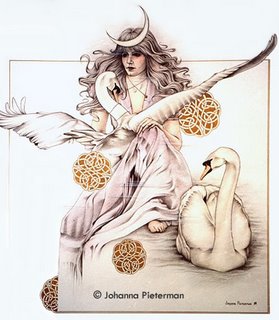
Gwaten(Buddhist)- Japanese Buddist lunar Goddess, one of twelve Buddist deities called the Jiu No O, adopted from Hindu mythology. Gwaten is used from the Hindu God Soma, and is portrayed as a woman holding in her right hand, a disk symbollizing the Moon.
 Pachamama(Inca)-Incas of ancient Peru believed that Pachamama personified the Earth and its greatness. Incas ruled Peru from 1450 until 1532, when Spaniards conquered their territories. Pachamama and her husband Inti, the Sun god, were viewed as generous Gods. Incas used to offer llamas( a deer) and other animals as sacrifices to the Earth goddess. Pachamama continues to be worshipped today in Peru.
Pachamama(Inca)-Incas of ancient Peru believed that Pachamama personified the Earth and its greatness. Incas ruled Peru from 1450 until 1532, when Spaniards conquered their territories. Pachamama and her husband Inti, the Sun god, were viewed as generous Gods. Incas used to offer llamas( a deer) and other animals as sacrifices to the Earth goddess. Pachamama continues to be worshipped today in Peru.  Tlazolteotl also Tlaculteutl(Aztec) - Aztec Sex Goddess who may have had lunar associations. Tlazolteotl name means “Lady of Dirt”, produced lust and then forgave those who lusted. She especially favoured strange affairs. She had four aspects, which have been interpreted in modern times as representing four phases of the moon.
Tlazolteotl also Tlaculteutl(Aztec) - Aztec Sex Goddess who may have had lunar associations. Tlazolteotl name means “Lady of Dirt”, produced lust and then forgave those who lusted. She especially favoured strange affairs. She had four aspects, which have been interpreted in modern times as representing four phases of the moon.
 Cerridwen(Welsh) - Welsh goddess of death and rebirth, the moon, inspiration, poetry, prophecy. She is the "White Sow", the revered Crone Goddess into whose kingdom we must enter to be reborn. She was compared to reencarnation.
Cerridwen(Welsh) - Welsh goddess of death and rebirth, the moon, inspiration, poetry, prophecy. She is the "White Sow", the revered Crone Goddess into whose kingdom we must enter to be reborn. She was compared to reencarnation.
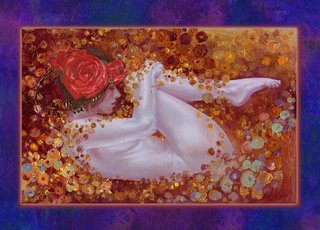 Aruru(Mesopotamian) - The Great, the Potter, she taught women to form clay dolls and smear them with menstrual blood as a conception charm. Made mankind out of clay and made it breathe and live with her blood of life. Viewed as the creator, producer of life. She controlled when one must die and enter the kingdom of the after life. She was formed by the blood of a sacraficed virgin given up by the gods. Will return to condem the selfish and wicked.
Aruru(Mesopotamian) - The Great, the Potter, she taught women to form clay dolls and smear them with menstrual blood as a conception charm. Made mankind out of clay and made it breathe and live with her blood of life. Viewed as the creator, producer of life. She controlled when one must die and enter the kingdom of the after life. She was formed by the blood of a sacraficed virgin given up by the gods. Will return to condem the selfish and wicked.
